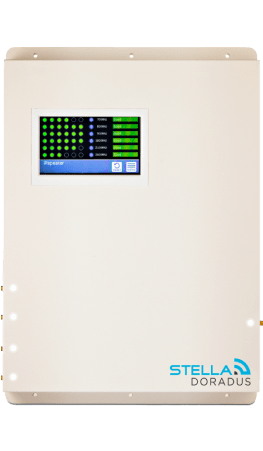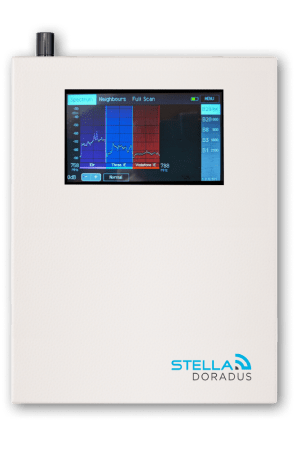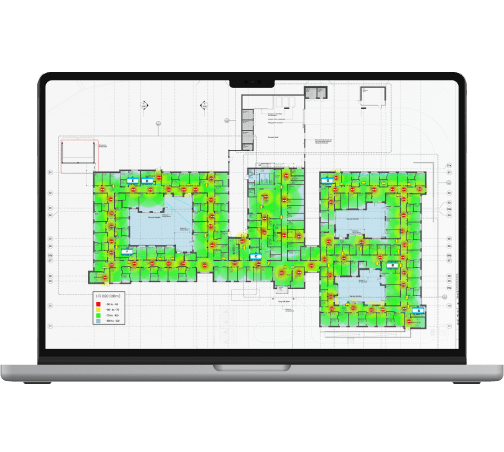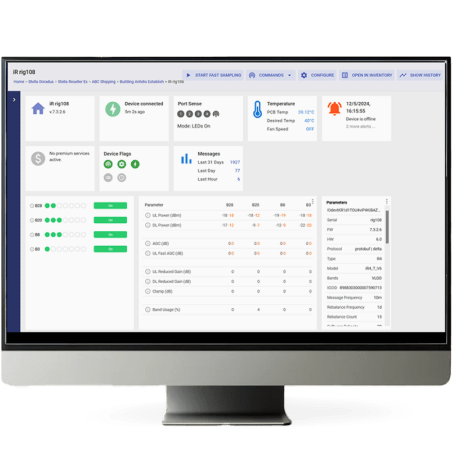Installation of mobile repeater systems involves a few critical steps, such as installation of outdoor antenna, indoor antenna placement and setup of signal repeaters. However, one of the most challenging steps is the installation of the indoor antennas. Why exactly is it challenging, you may wonder?
When installing the indoor antennas, an installer has to decide which type of antennas to use and where to place them inside the building. If antennas are poorly installed, the reduction of mobile signal can be significant. The good news is that installers can turn to professional tools in order to install antennas correctly. We recommend using the Stella Doradus Test Tool that is designed and manufactured by Stella Doradus engineers. Without professional signal meters, such as a spectrum analyser, it is almost impossible to detect the degradation of mobile signal indoors. Consequently, users inside the building will suffer from dropped calls and poor data speeds.
In this article we will take a close look at different scenarios of internal antenna placement. We will explain what types of internal antennas will work best in each scenario and where to place them for optimal results.
Scenario 1 – Corridors
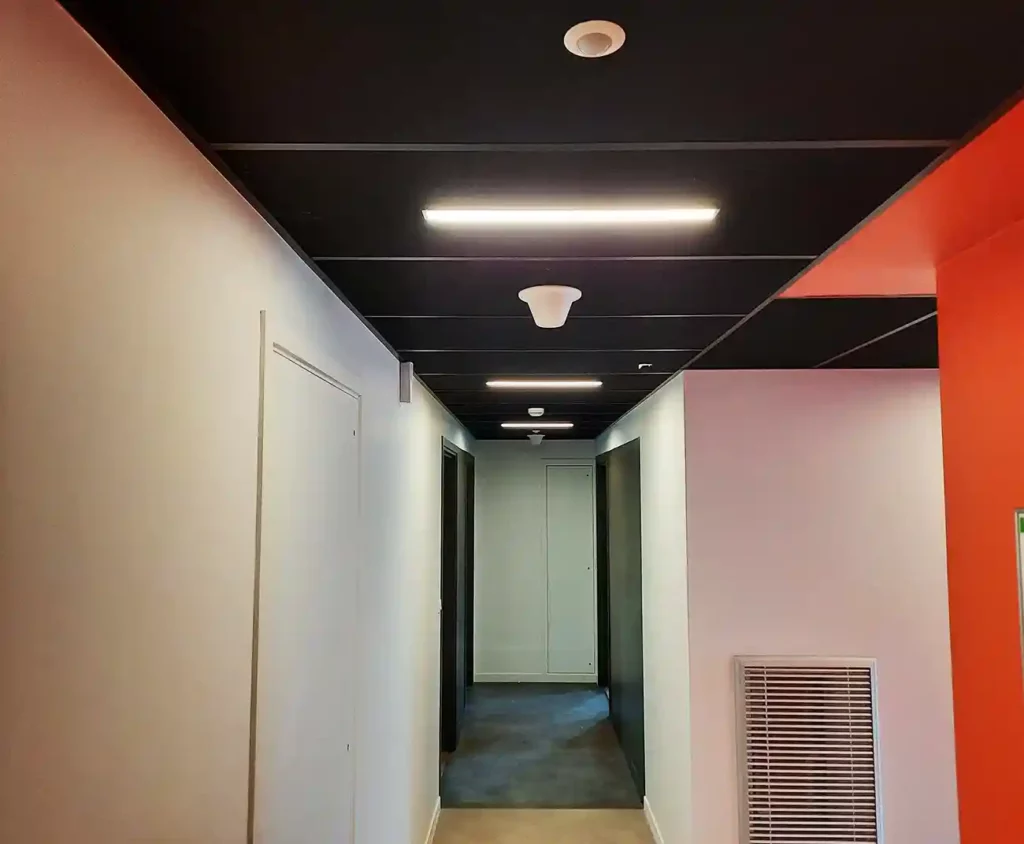
Corridors inside commercial buildings are usually long and narrow. Additionally, they often have false ceilings. So where should the installer place an internal antenna?
Typically a ceiling mount omni antenna is installed in the false ceiling. The antenna should be placed in the centre of the corridor. Each antenna separated by 15m from the next, down along the centre of the corridor.
If the antenna is installed over to one side and close to the wall, up to half the signal will be wasted into the wall instead of down into the corridor where people walk.
Remember to make sure that there are no obstructions near the antennas, especially any metal objects like light fittings, fans and signage. As you know, obstructions near antennas considerably reduce signal propagation.
Scenario 2 – Large office rooms with false ceilings.
Large office rooms typically have a false ceiling height of about 2.2m, and area of about 5x5m or less.
In this case we recommend installing one ceiling mount omni antenna in the centre of the room. Again, you should keep the antenna clear from any obstructions, and in a central location.
Scenario 3 – Office rooms with no false ceiling.
In the case where there is no false ceiling, we advise the placement of a panel antenna on the wall. The panel antenna should be installed between 2m and 3m high. It should be tilted downwards by about 5°, pointing in the location where you expect most users.
It is very important to tilt the antenna downwards. Otherwise, the main energy lobe out from the front of the panel will actually pass over the heads of the users and not at them.
Scenario 4 – Rooms with high ceilings. Industrial factories.
If you are installing a repeater system in rooms that have high ceilings (up to 5m-8m high), you should choose one of two following options.
Option 1: Panel Antennas on structural columns.
If there are structural columns in central locations in the room, you can install up to 3 panel antennas on these columns: one panel in each direction, 120° apart. These antennas can be installed at around 2m or 3m high, tilted downwards.
Option 2: Panel Antennas on ceiling.
Another option is to install the panel antennas on the ceiling pointing directly downwards, similar to how the panel lights are installed. The distance between panels should be roughly 15m-20m apart.
Option 3: Yagi antennas.
If coverage is only required in specific locations, Yagi antennas can be selectively installed to “point” into these desired locations. The signal from a Yagi antenna is more directional than a panel. It can be compared to a beam of light from a flashlamp. One can shine this beam of light into the desired area.
Scenario 5 – Large open areas with 12m ceiling height. Industrial factories.
In the case of large open rooms with very high ceilings, only Yagi antennas should be considered. In this case, the Yagis can be installed high up on the ceiling pointing downward with a tilt of between 30° and 45°, depending on the areas below.
We hope you enjoyed this article and found it useful. Take a look at our Installer zone if you are interested in becoming a certified Stella Installer.
If you have any questions while installing a Stella Doradus repeater system please contact us.


